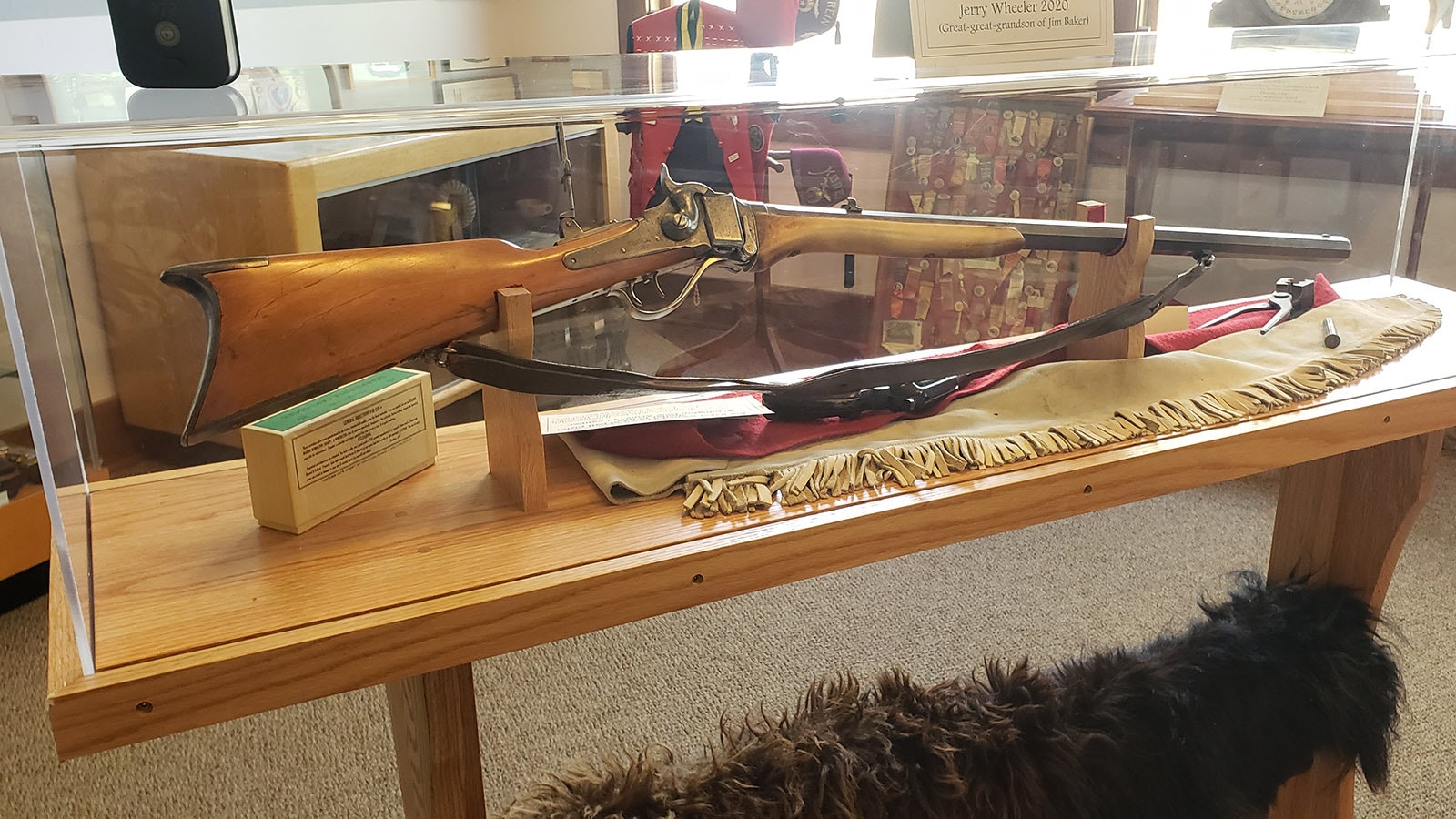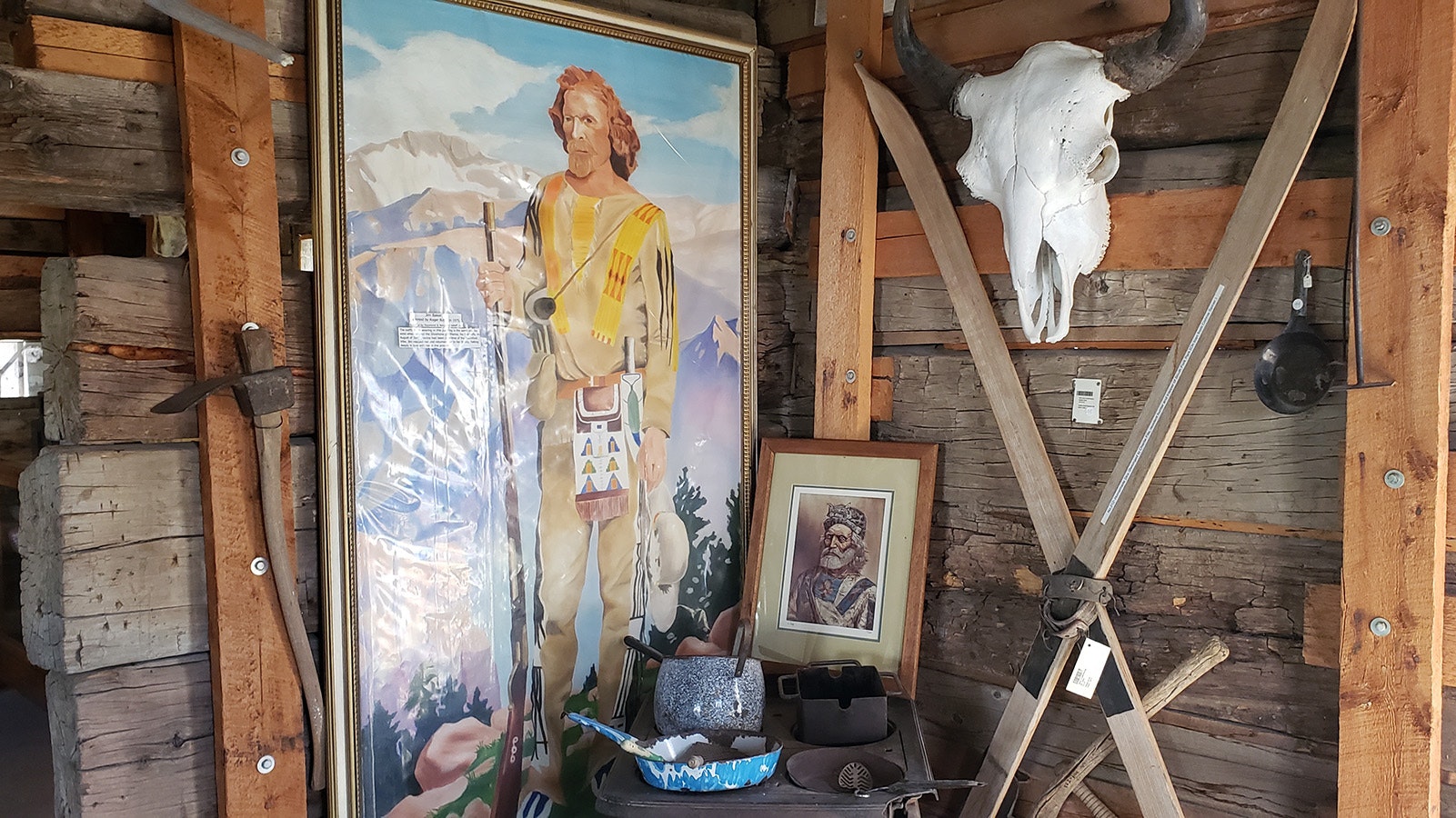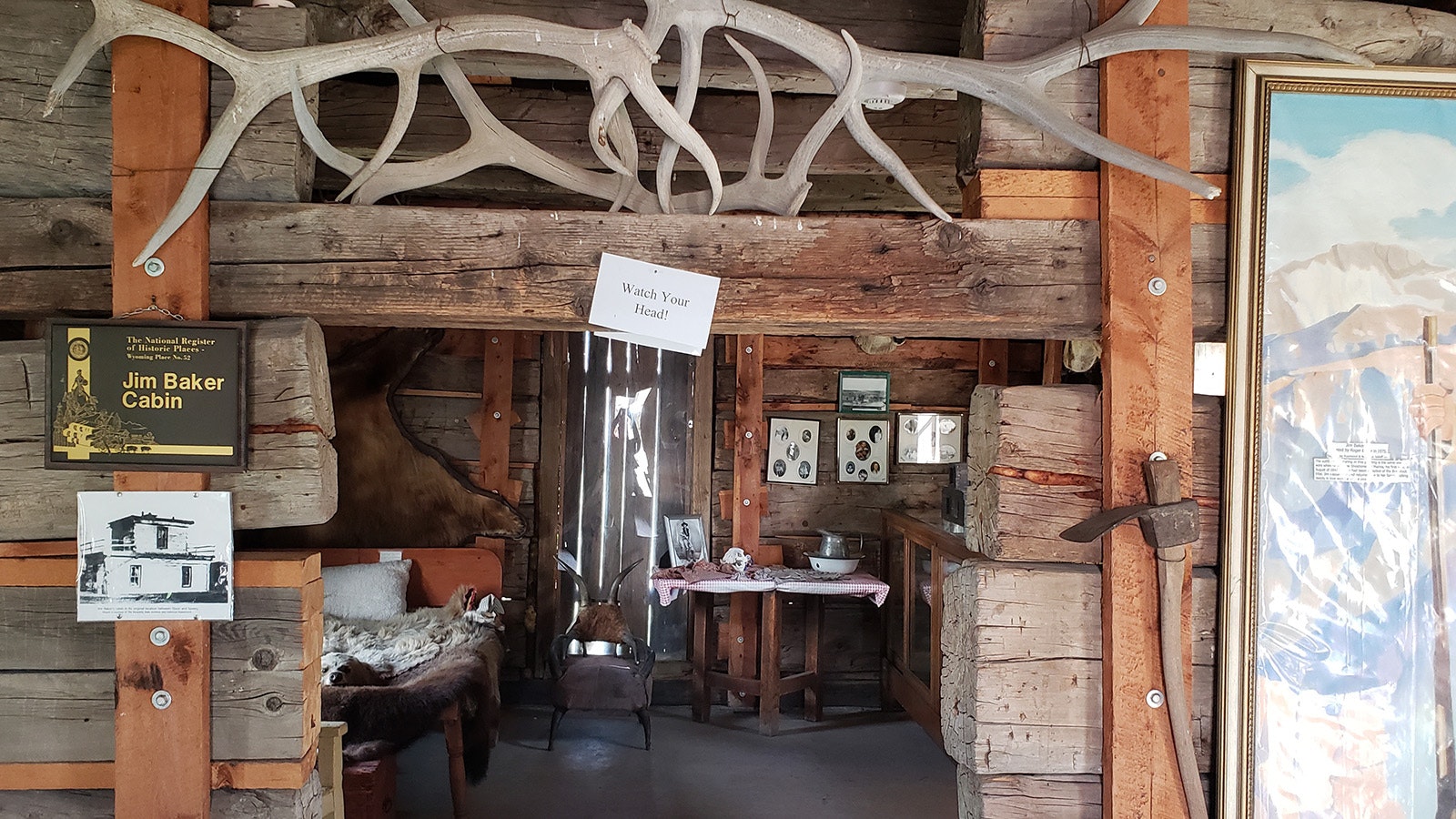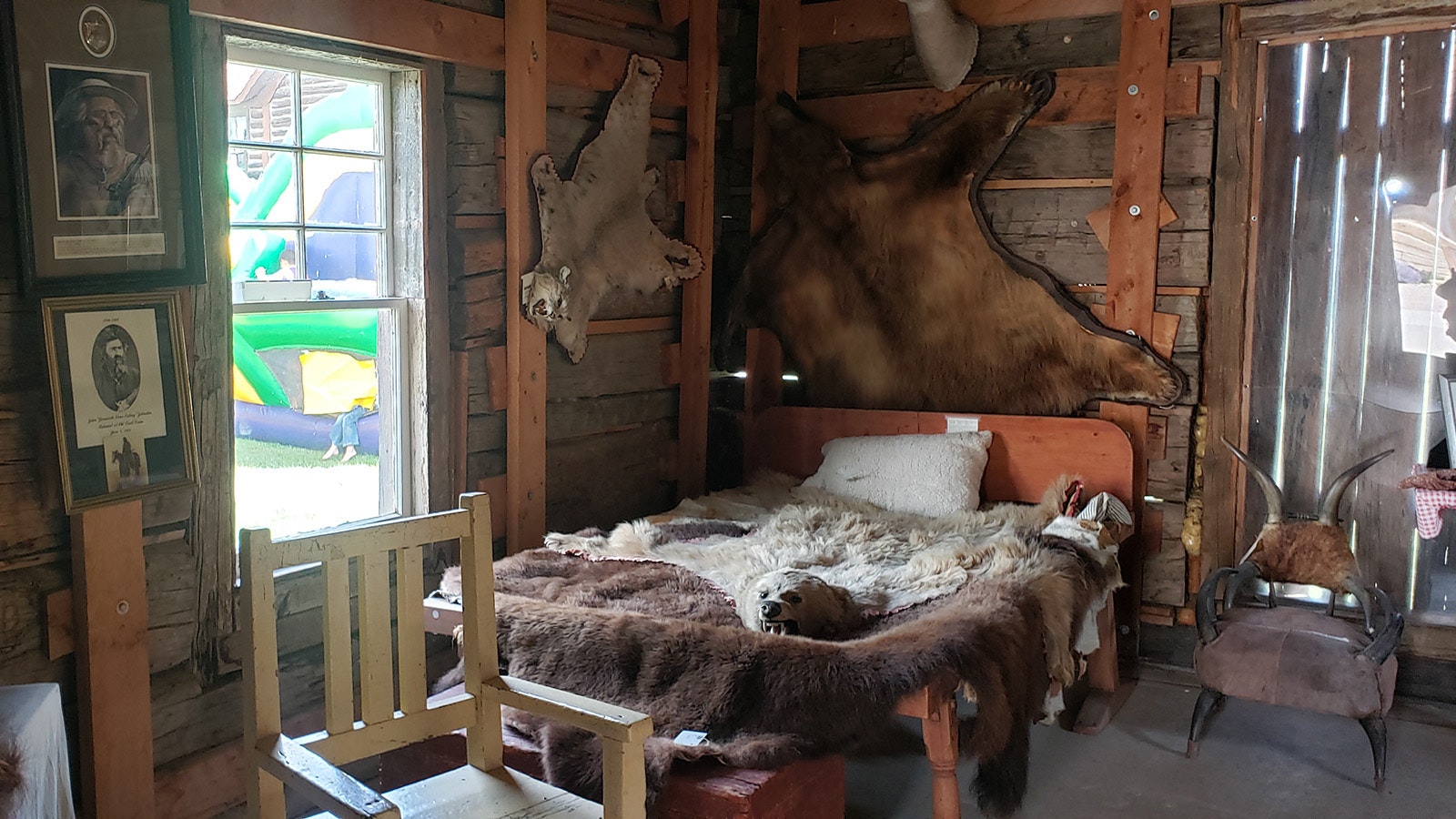Working on the Jim Baker cabin in Savery, HistoriCorps crew leader Karina Burbank sometimes feels like she’s playing a giant game of Lincoln Logs, with one important difference.
It takes a whole lot more effort and sweat to place a real, hand-hewn cottonwood log into Jim Baker’s cabin than it would a toy Lincoln Log.
It is literally back-breaking work, Burbank said, and has to be done with human safety and cabin preservation in mind.
That means jacking up the existing cabin to support the weight above each rotten log in the structure. Only then can the rotten logs be taken out and replaced with a brand-new, hand-hewn one.
To that end, there are now pyramid-shaped stacks of wooden boards called “cribbing” surrounding the Baker Cabin as members of HistoriCorps have arrived to work for the next three weeks on saving this piece of iconic American history.
Those cribs are supporting metal jacks that have lifted the logs above the rotten ones by a critical inch or so away, ensuring the cabin doesn’t fall over as new logs are swapped in for old.
“We have around 12 logs that are, like, water-damaged,” she explained. “And so, what we’re doing is taking the weight off them with jacks and then just swapping them out with new wood that we have found in the area.”
Several cottonwood logs were donated earlier in the year by volunteers for the preservation project that HistoriCorps is leading. Volunteers from the area are expressly welcome and invited to join the effort for a day or more, where they will learn how an authentic mountain man cabin was built in the 1800s while helping to preserve an important piece of both Wyoming and American history.
Sleeping Well At Night
HistoriCorps travels around the country with a cadre of volunteers, many of whom return each summer to help the nonprofit preserve some of the nation’s most historic structures. The Colorado-based group has won numerous national awards and recognition for their work.
All the work HistoriCorps is doing is being done in a period-correct manner, in keeping with the fact that the Jim Baker cabin is on the National Register of Historic Places.
That period-correct manner means doing a final pass on each log using old-time Mountain man techniques just like Baker himself used to build his cabin.
“Because we have access to power tools for this particular cabin, we’ve been shaving down our logs to be just a little bit bigger than they need to be,” Burbank explained. “And then we can use axes to get them down to the perfect size and shape.”
That means taking a swing with an actual broad axe at a slight angle, shaving off a thin section of wood each time, until an entire half inch is gone from both inner and outer facing surfaces.
The top and bottom surfaces, which are hidden by the logs above, don’t have to be prepared in this manner.
While it might not sound so onerous on paper, it does take a lot out of the people who are doing this work outside in the hot sun. There’s no such thing as insomnia after such a day.
“Definitely, we all sleep well at the end of the night,” Burbank said. “I can’t imagine how (Baker) did this whole building. It feels like it’s taking me an impossibly long time just to get one log done.”
Bring Your Own Shower
Burbank is from New York but lives in North Carolina these days.
The pastry baker signed up for HistoriCorps after seeing a job posting that said, “If job applicants wish to shower, they may have to provide their own.”
Something about that struck her as funny. And somehow attractive. So, on a whim, she applied. It’s worked out well, she said, and this is now her third season working for them. Most of the time she hasn’t actually had to supply her own shower, though sometimes, it just feels like the right thing to do because, well, camping.
“We do have solar showers that we have brought that we use sometimes,” she said. “We’ll just fill a bag up with water and put it in the sun. And then we have a little tent that you hang the bag in. So you go into the little tent, and, unfortunately, because of gravity, you have to stay underneath the nozzle that the water comes out of, which means the shower is done all crouching. … But it gets the job done.”
A New Appreciation Of Pioneer Grit
Burbank has learned all kinds of old-time building techniques, from cedar-shake roofs to hand-hewn logs, and that’s given her a brand-new appreciation for America’s pioneers and what they did to survive.
“I can sort of spot (these old buildings) a lot more easily,” she said. “And I can recognize the work that went into it. So, I see them and go, ‘Wow, someone has spent a lot of time and care on this,’ where, usually, before this job, I would have just walked right past them.”
Baker’s cabin is one of those where she can definitely see that a lot of time and effort were involved, particularly since it’s a two-story cabin — something far less common in pioneer times.
Burbank has been reading up on Baker, thanks to historical books at the Little Snake River Museum where Baker’s cabin is located. But she’s also noticed many places that are named after Baker on her weekend travels as well.
“This is my first time in Wyoming for this project, and I didn’t know there’s so much about him,” she said. “It’s been really cool to see his name popping up all over the area, especially right after I arrived.”
HistoriCorps’ effort this year is just round one of work on the cabin, according to the HistoriCorps project’s manager, John Savoie, who said they have identified several other logs that should be replaced at some point in the future.
“What we’re tackling right now are the most, high-priority logs, which are really rotted out on the cabin,” he said. “We have 12 logs that we’re replacing this time.”
He estimates there are at least another five to 10 logs that should eventually be replaced and said he’s making a list of other work the group could do to continue the preservation of the Baker cabin.
Cabin Used To Be Three Stories
Burbank is thinking about how much work it is to build one story, much less two, but when Baker initially built his cabin in the Little Snake River Valley 152 years ago, it was actually three stories.
The third story was a lookout tower. Baker was friends with many American Indian tribes at the time, but there were also some who had scores to settle with him. He was convinced some of those might show up once they learned where he was living, and he wanted to be able to see them coming.
Eventually, as hostilities eased, the third-story watch tower was taken down. But Baker retained the second floor of the cabin, to store the furs and hides that remained a large part of his day-to-day trades far longer than most other mountain men of his day.
Baker was one of the last real mountain men and is among the unsung heroes of that era, with a legend that’s every bit as compelling as others of his day. Hugh Glass, Kit Carson, and Jim Bridger, all spoke highly of Baker, lauding his achievements in newspaper articles of the time period.
Not only did Baker beat impossible, Thermopylae-like odds at Battle Mountain, defeating hundreds of American Indians with a dozen or so scouts, but he, too, like Glass, survived a bear encounter. In fact, he survived more than just one.
Baker, like Carson, Glass and Bridger, was also approached by famous dime-store novelist Ned Buntline, who wanted to write the story of Baker’s life. Baker didn’t care to become famous, so he refused.
If the world forgot who he was, he was OK with that.
He lived out the rest of his days in the Little Snake River Valley in as much obscurity as he could, dying in 1898. There was just a short obituary about his death, even though he’d played a huge role in the settlement of the West alongside greats like Bridger and Carson.
Bringing Baker’s Cabin Back Home
After Baker’s death, there was a battle over who would keep his cabin. Colorado wanted it, as did Savery and Cheyenne. For a time, it appeared Cheyenne had won the war, and the cabin was displayed in Frontier Park for 60-some years.
But, after interest waned, the cabin was disassembled and stored away never to return, left to the tender mercies of oblivion and neglect.
Savery still wanted Baker’s cabin, though, and was eventually successful in bringing it back home. It’s become a key exhibit on America’s early mountain man history for the Little Snake River Museum.
Its present-day home is just a mile from where Baker himself built this cabin, according to Little Snake River Valley Museum Director Lela Emmons. Stories about Baker and his family trailing their cattle all the way to Wyoming are still told in the valley, where many of his descendants still live, and genuine Jim Baker artifacts crop up from time to time, like his gun and his sword.
“Technically, he was the first retiree in the Little Snake River Valley,” Emmons said. “He was kind of the last of the frontiersmen. He was a scout and a guide and fought in both Indian battles and was sort of a friend to Indians in the area.”
Even so, Emmons’ research has found that Baker was more refined than his appearance in photos might suggest.
“He had a couple of clocks and other things that were very fancy, very refined,” she said. “And he himself had certain refinements that you wouldn’t necessarily expect. He was better educated than your average mountain man.”
Renée Jean can be reached at renee@cowboystatedaily.com.


















